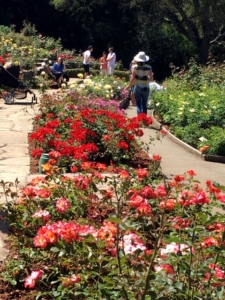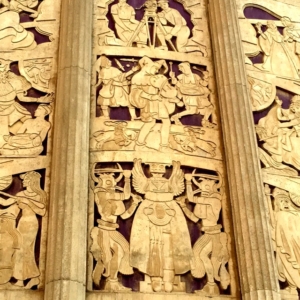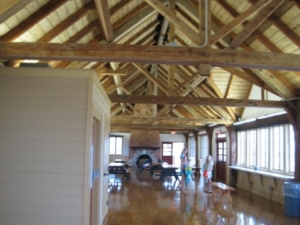
Berkeley Rose Garden, Berkeley, California
Architect Bernard Maybeck designed the terraced garden. Constructed by hundreds of workers from the CWA and later, the WPA, the garden was dedicated in 1937.
Photo Credit: Susan Ives
Recently, progressive Democrats have proposed a Green New Deal, a massive transition to protect our planet from further damage from the juggernaut of climate change. It’s time to consider as well a Beauty New Deal to protect and restore America’s natural environment and enrich and deepen the quality of our lives.
There is an inherent human need for beauty and the vitality of creative expression. Beauty impacts all of life. Studies show that beautiful built surroundings and access to parks, nature and green space contribute to good health, social connection, altruism, equity, tolerance, reduced consumerism and increased sustainability.
While beauty’s private aspects are subject to the same unjust distribution as other private goods, beauty, as a public good, has equity as its larger dimension.
In the 1960s, amid antiwar and civil rights marches, members of Congress worked across the aisle, responding to President Lyndon Johnson’s warning that we were becoming “an ugly America” and needed to restore and protect a beautiful America for future generations.

“The Progress of the Negro Race,” 1938
A decorative frieze by Daniel Olney adorns the Langston Terrace Dwellings public housing complex in Washington, D.C.
Photo Credit: Courtesy Library of Congress
This led not only to expanding national, state and local parks and beautifying highways, but to beautifying urban America as well.
Encouraged by Interior Secretary Stewart Udall, Lady Bird Johnson led a broad “beautification” campaign, starting with the nation’s badly neglected capital, Washington D.C. and African American neighborhoods most deprived of natural beauty by institutional racism. The “beautification” initiative was among the most widely popular of Johnson’s Great Society.
Franklin Roosevelt’s original New Deal was multi-dimensional, not merely economic-material, but also green and beauty-oriented.

Robert Stanton Theater, King City, California
The high school auditorium, built in 1939 with WPA funding is embellished with sculpture by Joseph Jacinto Mora. The Art Modern-style building was designed by Robert Stanton.
Photo Credit: Susan Ives
With a major focus on environmental protection and restoration, New Deal programs hired artists, writers, photographers, actors, playwrights and musicians to take public art and performance to cities and s towns across America, while providing inspiration and income to hard-hit creatives. Earlier, encouraged by Theodore Roosevelt, the City Beautiful Movement that flourished during the 1890s and 1900s added parks and other public spaces to beautify American cities.
The importance of beauty has been largely neglected in public policy discussions of our times, but these bygone efforts provide a rich store of ideas to draw upon.

Lake Michigan Beach House
The CCC developed Michigan’s Ludington State Park, including its beautiful beach house, completed in 1935.
Photo Credit: Susan Ives
A Beauty New Deal should:
- Provide greater public support for artists, writers, poets and performers by re-establishing the original New Deal’s WPA Arts programs
- Educate students to appreciate, create and cultivate beauty in their communities
- Preserve and promote natural beauty by expanding parks, wilderness areas and open spaces, while strengthening protections from commercial encroachment
- Re-establish the Civilian Conservation Corps (CCC) for beautification and environmental restoration projects
- Encourage use of property taxes for urban beautification, including planting millions of flowering and shade trees
- Build new public squares
- Support urban mini-farms and gardens
- Provide “Equal Access to Beauty” through free summer camps for underserved children
- Support “Renaissance Zones” using grants and tax incentives for beauty-led economic development in poor communities
- Support repertory theatre and other performing arts in small towns and cities
- Direct beautification funding to areas other than the established cultural centers, and finally,
- Support colleges to culturally enrich the communities around them.
Even as the current struggles threaten to tear us apart, the “Politics of Beauty” can bring Americans together and closer to the America the Beautiful of which we can all be proud.
